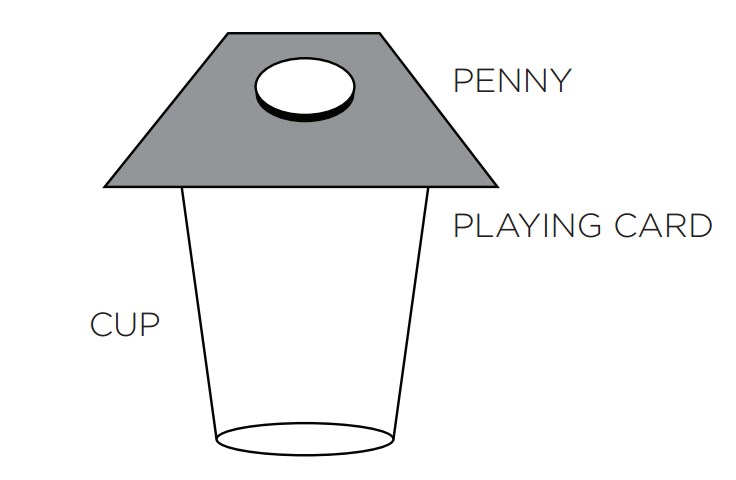Challenge your students to put a penny in a cup without touching it.
The solution is to use inertia to your advantage by taking the playing card out of the way as quickly as possible.
This is a simple (and less costly!) way to practice the "waiter's trick" of pulling a tablecloth out from under a plate. This is a demonstration they can easily recreate at home without breaking all of the dishes!
A full explanation of the physics involved is included in the Pull the Tablecloth resource.

